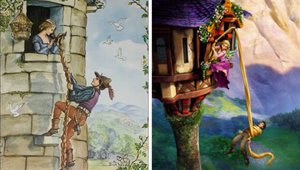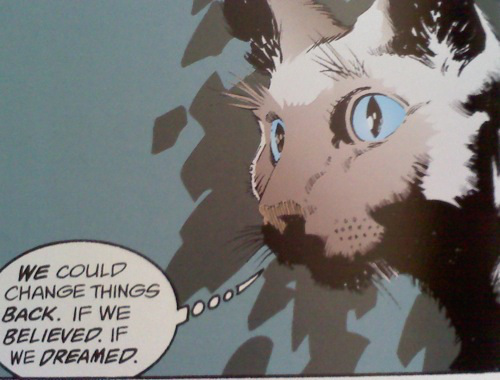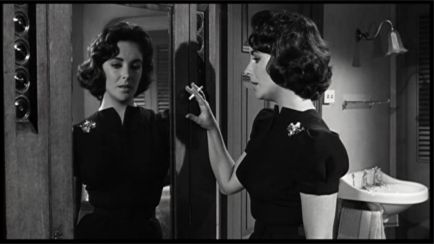 Suddenly Last Summer
Suddenly Last Summer
When I sat down to write my very first post for Just Dread-full (an event that took place over two years ago), I wrote about the first episode of American Horror Story: Haunted Hotel. Of course, I’d intended, at least perhaps, to watch more episodes than the first, but I found (as is often the case for me) that I was so excited to write, that I wrote my blog post after episode one had aired. Now, over two years later, another American Horror Story blog post is born from similar circumstances. I’m watching a variety of films and T.V. shows for my Independent Seminar, and after watching the first couple selections, the urge struck me. I thought: I should watch more shows on the list before writing my weekly response, but, I really want to write. And so, this post is born, and it should give me some ideas or preparation for my imminent writing assignment. I watched the 1959 film Suddenly Last Summer today, along with the first two episodes of American Horror Story: Asylum. Now it’s time to consider how madness is spatialized in this film. Some related questions might consider how space is organized in terms of “madness,” so-called, and what space reflects about our conceptions of madness.
So what is “the mad space” for starters? Of course, in both of these films, the “mad space” is a mental hospital or an asylum. In Suddenly Last Summer, which is set in 1937, Catherine (Elizabeth Taylor) is confined to a private, and then a state run hospital for what some characters regard as fits of violence and chronic memory problems; her aunt, Ms. Venable, calls the illness Dementia Praecox, but that does little to describe both the difficulties and the ostensible social deviation that characterize Catherine’s behavior. Ms. Venable practically bribes the state hospital to lobotomize Catherine, but the hospital’s leading doctor manages to elicit information about his patient’s past, including the psychological presence of a troubling traumatic memory. And in American Horror Story: Asylum, multiple plot lines converge in an asylum that is both dismal and abysmal, in 1964 – a location for so-called social deviants and all sorts of other “monstrous” mad people with significantly quirky affective behavior. Jessica Lange plays the rigidly religious head nurse, Sister Jude, who runs the asylum in an unorthodox and sometimes troubling manner, despite often contending with individuals who challenge her mandates—sometimes from patriarchal sources with equally problematic motives.
In Suddenly Last Summer, the state-run mental institution is drastically
 Catherine stands on the balcony over looking the recreation room in Suddenly Last Summer
Catherine stands on the balcony over looking the recreation room in Suddenly Last Summer
underfunded. Treated like caged animals, a large number of individuals with affective idiosyncrasies who embody stereotypical depictions of mental illness are more or less corralled in a large “rec room” that doesn’t look incredibly recreational, where they’re left to amuse themselves in all manners of seemingly strange ways. Catherine (who the doctor puts in the nurse’s station instead of the rec room when he admits her) stands out as the one character who doesn’t look like a glaring stereotype of mental illness through bizarre affective behaviors and – possibly – through her evident awareness or lucidity, while such awareness appears to be absent in some of the individuals in the state run hospital. In this film, thus, affectively idiosyncratic, and at least sometimes partially absent people, are localized in the asylum, the mad space, a place with a dull brick exterior that’s the focus of the film’s opening shot. They appear to be, in a sense, deposited, or better yet, discarded. They are left in a room to amuse themselves, a room that does more to “house” them, it would appear, than to heal them. And the circular balcony that wraps around the room on the second floor and allows the viewer to look down – a balcony off limits to the patients – puts them in a position not wholly like, but not wholly unlike the Foucauldian panopticon, where invisible eyes are staring at an individual (who can’t look outward) from all directions. They are thrown together in a central room, and their confinement to a room and below a balcony situates them in highly limited space. Tim Cresswell argues that we often personalize “place” to make it ours; this location is both de-personalized and crowded – a seemingly typical space for the mad person in a lot of 20th century film and literature. Notably, the individuals are in an immensely crowded location, but there is little social interaction going on between patients, suggesting a space that contains a strange amalgam of isolation and crowding, and thus disrupts a lot of typically accepted space-place binaries.
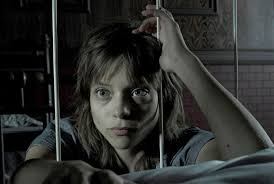 American Horror Story: Asylum
American Horror Story: Asylum
American Horror Story: Asylum is much the same in terms of its tendency to “corral” those considered mad, or at least affectively different, in a singular and unappealing location. There is the proverbial “rec room” in this show, too (we see these also in The Bell Jar, Girl, Interrupted, and One Flew Over the Cuckoo’s Nest) and there seems to exist a clear division between the rec room’s inhabitants: there are the so-called lucid characters, who don’t “seem” insane, and there are the incredibly quirky, again, sometimes seemingly cognitively absent characters, whose moment-to-moment behavior deviates from that which is “typical” and “socially acceptable.” More or less every element of this show conveys the asylum as antiquated to the point of being almost anachronistic, and incredibly bleak and dismal. While they do show (again, antiquated) attempts to heal patients, like placing them in steam baths, there is no ostensible healing going on in this asylum. This asylum, too, becomes primarily a holding place for the mad – who are sometimes confined to their own rooms, but are often in the rec room – instead of a place of healing, despite the fact that Foucault would say that during this period (we’re in 1964) madness had been medicalized. The irony, then, of American Horror Story: Asylum is that our society has medicalized madness, and yet, in this film, nobody is getting well. Is this asylum an aberration, or is it meant to indicate a typical trend? It is, in any case, a rather useless exterior location.
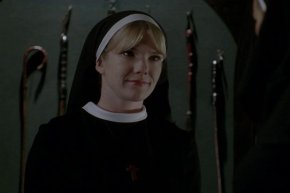 American Horror Story: Asylum
American Horror Story: Asylum
Additionally, some characters are placed in the asylum because they are (presumably) falsely accused of horrific crimes, or because they defy social conventions despite seeming incredibly “sane.” As such, both films seem to suggest a distrust and general trepidation toward a medical model of mental illness. There is the sense, in both films, that we’re classifying the wrong people as “sick” and doing horrific things to them, an assumption displayed by the juxtaposition of the affectively atypical and the affectively typical in the asylum – and in American Horror Story, in these seemingly different gradations or types of madness exist in one locale together. The space in both film suggests a lack of diagnostic self-reflexivity, an inability to look closely at who’s being categorized as “sick” and why they’re being categorized that way. In such a way, the exteriorization and compartmentalization of mental illness is depicted as fundamentally flawed. Can affect and behavior really indicate madness – these works ask? In both works, there are characters deemed mad who seem glaringly and evidently sane. Why do we think they’re different? What do we make of this inter-space “diversity” of individuals?
If the asylum is a place that proclaims healing but “houses” undifferentiated and often wrongly diagnosed “sick” individuals (indeed, in American Horror Story, the asylum was originally a tuberculosis ward, and is thus marked as a place of exteriority across historical moments), then both of these “mad spaces” are regarded differently in the films. In Suddenly Last Summer (which, again, takes place in 1937), the state run-hospital is a location that’s been neglected and discarded. Its lack of funding highlights its exterior position, and the exterior position of mental illness, despite the presence of a medical model, or perhaps because of a presence of a medical model that deems the mad innately “sick” and thus pathological. To expand and build a new building for the so-called sick (by getting money from the wealthy Ms. Venable) the head doctor, Dr. Cuckrowicz, is blackmailed to give Catherine, her niece, a lobotomy. He doesn’t do it, but he also doesn’t reject the prospect incredibly quickly; the narrative may suggest some temptation for him to give up his ideals and do what needs to be done for the hospital expansion, thus depicting the “mad space” as one so exteriorized, so desperate, that a level of economic and medical corruption becomes feasible and likely. From another lens, society becomes so desperate to confine even as it doesn’t support its own confinement, and so injustice occurs to make the mad-space continue to thrive.
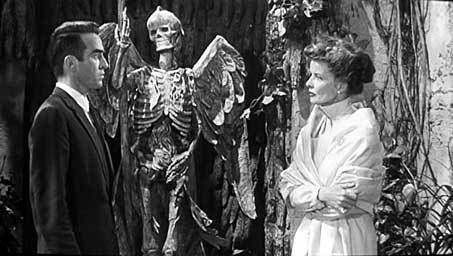 Suddenly Last Summer
Suddenly Last Summer
The asylum in American Horror Story: Asylum is much the same way – when glimpsed from 1964. In 1964, the asylum is a sequestered space for forgotten individuals, and it becomes incredibly easy to kind of “disappear” into the asylum, because it’s nearly impossible to get out, kind of like in Hotel California, where “you can check out any time you’d like, but you can never leave.” This inability to traverse or transgress the borders of the asylum makes the asylum in American Horror Story a literal place of horror, a mad location whose infinite horror lies in the fact that it’s never ephemeral, for anyone, and anyone can sign you in to make you stay. Occasional visitors will come (at least, by the end of episode two) to see or work in the asylum from the outside world. They may even express extreme disapproval at how Sister Jude (Jessica Lange) runs the asylum, but she’s able to use her outdated methods anyway, because the asylum is heavily exteriorized, sequestered from society, and nobody really interferes with its operations.
Conversely, when Sarah Paulson’s character, Lana Winters, a journalist, visits the asylum to do a story, Sister Jude devises a plan to blackmail Sarah’s partner into signing her in (because Sarah’s a homosexual and her pending article poses a threat to Sister Jude’s reputation). As such, we again see the exterior asylum as a place where sickness is a category of justification and non-reflexivity, a place, simultaneously, of corruption and blackmail because of that exteriority. There’s also the sense that the mad space, in American Horror Story can draw in, and consume, based on Lana Winter’s narrative. In other words: operate with care. Don’t get too close to the asylum, because it will pull you in and make you sick – perhaps, even, make you monstrous, or turn you into the mad monster. And once you enter the asylum, true to the words of Sartre’s play about hell, there is no exit. There is the sense, in American Horror Story, that even many of the personnel rarely leave the asylum grounds. But, significantly, American Horror Story: Asylum also contains contemporary scenes in which the building of the asylum is glimpsed from the vantage point of the early 2000’s, and in these scenes, the characters are fascinated with the run-down, abandoned asylum, reflecting the likely fact that in present day, the asylum of times gone by – the abandoned mad space – is a location of fascination and exoticism, a place that exists with historical “traces” of the “mad other” infiltrated throughout its premise – at least, in the contemporary imagination. These divergent perspectives of the asylum – as a hellish place of neglect, at best, and torture at work, and as an exotic place of fascination and intrigue – may indicate a Derridean form of differance regarding how the mental institution exists in present-day thought.
Finally and highly significantly, in each of these asylums, there exists an operating room, which of course would never exist in a contemporary asylum. Both films evoke a fear – perhaps a past fear – of a hyper-medicalization of mental illness, embodied in the space of the operating room, and the pairing of a procedure which involves cutting with the treatment of a mental disease. In Suddenly Last Summer, Dr. Cukrowicz is a skilled lobotomist with presumably good intentions but certain knowledge –which he expresses at one point in the film – that the lobotomy usually leaves the patient in a sort of passive stupor. In American Horror Story, the malicious, simultaneously sadistic and moralistic Dr. Oliver Thredson performs questionable experiments with reckless abandon and becomes a sort of hyperbolic stereotype for the doctor-psychiatrist figure. Indeed, in American Horror Story, after watching the first two episodes, I might argue that Dr. Thredson is the real mad monster, and that his operating room is a potentially abject location of ultimate monstrosity and disregard for human life and what Judith Butler describes as the vulnerable human body.
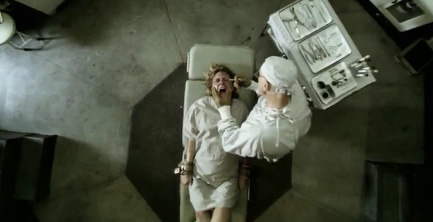 The operating room in American Horror Story: Asylum
The operating room in American Horror Story: Asylum
Similarly, at the beginning of Suddenly Last Summer, Dr. Cukrowicz’s dingy operating room, where a light goes out during surgery, is a place generally unfit for slicing open an individual’s skull and manipulating her brain structure. What’s worse, his surgery becomes a sort of theatrical performance; as he operates on an unconscious young woman, he’s surrounded by young, male medical students watching and waiting to make an inquiry, sitting on a balcony overlooking the show. He even concludes the lobotomy procedure in a theatrical way, telling the men “what they’ve just witnessed.” Thus, his operating room becomes a sort of monstrous space as well, and a space that we only see at the beginning of the film but that’s critical to the narrative. The victim of the lobotomy becomes a spectacle. He may go through pains to save the beautiful, smart, appealing Catharine, but who deserves to be saved from the procedure of lobotomy? Conversely, who warrants a debilitating brain surgery performed haphazardly in unsavory conditions? There is, then, some definite contestation associated with, or inherent in, a space that we don’t see frequently in the film, but a space that opens the narrative nonetheless and is thus critically important, despite its absence in the rest of the film. The additional patients who will meet Cukrowicz’s knife in the operating space – a dehumanizing space where patients essentially go to die – are also absent in the narrative, and this gap is, I think, critical to assessing Cukrowicz’s beliefs, and perhaps to an extent his character. One might even go so far as to say that the asylum operating room – the medical space of the asylum – is a location of violence and colonization, where invasion and involuntary treatment takes place against the body and mind (or, the body, including the brain) of the subject – at least, in these two films.
Despite Catharine’s redemption at the end of Suddenly Last Summer, both works in this post use the “mad space” – the hospital, the asylum – and the mad person’s connection to it, to depict a rather bleak outlook for individuals with mental illness in the early-mid 20th century. If Foucault argues that madness was entering a period in which it was highly medicalized at this time, then both the mad person and the space holding him or her, in these two texts – a space confining, restricting, sometimes killing the mad person – is a space (or place) on the outskirts of society that often kind of swallows its victims whole while colonizing the mind and body. While there are, perhaps, many contemporary benefits to a medical, psychiatric approach to mental illness, these films clearly use space or place to criticize the hyper-medicalization of such illness. From a contemporary standpoint, our conclusions become a bit confusing; even if psychiatry never looked exactly as it does in either of these works, did it not display some of the same problems, or some institutions with similar structures and practices? Did we have to pass through more questionable phases of medicalization to enter a historical moment that is (arguably, and perhaps only arguably) more humane and effective at treating madness. How does past treatment connect to the present, and what do we make of similarities and differences between now and then? The mad environment, in these two films, raises these – and probably many more – important questions.
Advertisements Share this:


